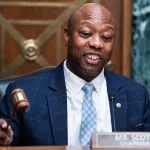
Navigating the Turbulent Waters of Health Policy and Global Politics
Posted in :
Health Cuts, Election Interference & Biotech: A Global Policy Shift
This blog post explores the recent significant changes within the Health and Human Services Department under Robert F. Kennedy Jr.’s leadership, the implications for foreign elections in Canada, and the troubling trends affecting food security and trade, along with advancements in biotechnology.
As I reflect on the shifting landscape of health policy, I am reminded of a conversation I had recently with a friend who is a healthcare professional. She expressed her concerns about the potential fallout of massive workforce cuts in the Department of Health and Human Services. Little did I know this conversation would lead me to uncover a web of political maneuvers, economic challenges, and groundbreaking scientific advances—each interlinked yet distinct. Today, I invite you to delve into this complex narrative with me.
Transforming Health Services: The HHS Cuts
In a bold move, Robert F. Kennedy Jr. has announced significant cuts to the Department of Health and Human Services (HHS). This decision involves a workforce reduction from 82,000 to 62,000 employees. That’s a staggering loss of 10,000 full-time positions. But why is this happening? Kennedy describes the HHS as a “dysfunctional” bureaucracy that needs streamlining.
Understanding the Cuts
Let’s break down the implications of these cuts:
- Workforce Reduction: The HHS will see its workforce shrink by 10,000 positions, cutting the total number of employees to 62,000.
- Streamlining Efforts: Kennedy believes that reducing the number of divisions from 28 to 15 will help the agency focus on its core mission.
- Cost Savings: The projected annual savings from these cuts are estimated at $1.8 billion.
These changes are part of Kennedy’s broader initiative, dubbed “Make America Healthy Again.” This initiative aims to tackle the chronic disease epidemic in the United States. But can we really fix such a complex issue through cuts alone?
Critics Weigh In
Not everyone is on board with Kennedy’s plan. Critics argue that these significant cuts could jeopardize public health oversight. For instance, Larry Leavitt, an executive vice president for health policy at the Kaiser Family Foundation, has raised concerns. He warns that reducing the workforce could hinder the department’s ability to provide essential programs and services. Are we risking public health for the sake of budget cuts?
Moreover, Kennedy’s approach mirrors actions taken by previous administrations. For example, the Trump administration also aimed to reduce the size of federal agencies. This raises questions about the long-term impact of such strategies on public health and safety.
The Bigger Picture
As I reflect on these changes, I can’t help but think about the broader implications. The HHS cuts are not just about numbers; they represent a shift in how we view health services in America. Kennedy’s reasoning is clear: he believes these cuts are essential for realigning the agency with its core mission. As he stated,
“These cuts are essential for realigning the agency with its core mission.” – Robert F. Kennedy Jr.
But what does this mean for the future of healthcare in the U.S.? Will we see improvements in efficiency, or will these cuts lead to a decline in service quality? It’s a delicate balance. The stakes are high, and the consequences of these decisions could resonate for years to come.
In conclusion, the HHS workforce reduction is a significant step in Kennedy’s plan to reshape health services. While the projected savings are enticing, the potential risks to public health oversight cannot be ignored. As we move forward, it’s crucial to keep a close eye on how these changes unfold and what they mean for the American public.
The Ripple Effect: Foreign Interference and Elections in Canada
As we approach the federal elections in Canada, a shadow looms over the democratic process. The threat of foreign interference is not just a rumor; it’s a growing concern that we must address. The integrity of our elections is under constant threat from foreign entities. This quote from Larry Leavitt resonates deeply with many Canadians today.
Potential Foreign Meddling
Recent reports have flagged several countries for potential meddling in our elections. These include:
- China
- India
- Russia
Why are these nations interested in our elections? It’s simple. They want to influence outcomes that align with their interests. This meddling can take many forms, from disinformation campaigns to cyberattacks. It’s alarming to think that our democratic choices could be swayed by foreign powers.
Impacts of Foreign Influence
What does foreign influence mean for our democracy? The implications are serious. When foreign entities interfere, they undermine voter confidence. People start to question the legitimacy of the electoral process. If we can’t trust our elections, what do we have left? This can lead to a disengaged electorate, where citizens feel their votes don’t matter.
Moreover, foreign interference can exacerbate existing political polarization. In Canada, we’re already seeing a divide between the Liberal and Conservative parties. As tensions rise, the potential for manipulation increases. If one party is perceived as being favored by foreign powers, it can lead to further distrust and division among the electorate.
Prime Minister Mark Carney’s Leadership
Under the leadership of Prime Minister Mark Carney, there’s a renewed focus on addressing these threats. Carney’s approach is crucial. He understands that foreign interference is not just a political issue; it’s a national security concern. His administration is working to bolster defenses against potential meddling.
But how effective can these measures be? It’s a complex challenge. The digital landscape is constantly evolving, and so are the tactics used by foreign entities. We need to stay one step ahead. This requires a collaborative effort between government agencies, tech companies, and the public.
Growing Concerns
As elections draw near, concerns about foreign interference are escalating. We must remain vigilant. The stakes are high. The future of our democracy depends on our ability to protect it from outside influences.
In conclusion, the implications of foreign interference in Canada’s elections are profound. We must recognize the threat and take action. The integrity of our electoral process is at risk, and it’s up to us to safeguard it. As we navigate this complex landscape, let’s remain informed and engaged. Together, we can ensure that our democracy remains strong and resilient.
Crisis on the Table: Food Insecurity and Rising Costs
Food insecurity is a pressing issue that many families face today. It’s not just a problem of hunger; it’s a complex web of economic and social factors. Recently, we’ve seen alarming trends indicating rising food insecurity in North America. The end of COVID-19 assistance programs has played a significant role in this crisis. As we navigate these challenges, it’s essential to understand the economic factors contributing to food price inflation.
Rising Food Insecurity Trends
In the past few years, food insecurity has surged dramatically. Reports from both the U.S. and Canada show a sharp increase in the number of families struggling to put food on the table. This is not just a statistic; it’s a reality for millions. The pandemic brought temporary relief, but as those assistance programs wind down, many are left in a precarious position.
- Rising food prices: With inflation on the rise, the cost of basic necessities has skyrocketed.
- Increased demand: As people return to work, the demand for food has surged, but supply chains are still recovering.
- Economic instability: Job losses and wage stagnation have left many families vulnerable.
Impact of COVID-19 Assistance Program Cessation
The cessation of COVID-19 assistance programs has had a profound impact. Many families relied on these programs to make ends meet. With their abrupt end, we are witnessing a crisis point in food affordability. As one economist aptly put it,
“We’ve reached a crisis point in food affordability for many families.”
What does this mean for families? It means tough choices. Do they pay for groceries or rent? Do they sacrifice nutrition for affordability? The end of these programs has left a void that many are struggling to fill.
Economic Factors Contributing to Food Price Inflation
Food prices are not rising in a vacuum. Several economic factors are at play:
- Supply chain disruptions: The pandemic has caused significant delays and shortages in food production and distribution.
- Trade policies: Changes in trade agreements and tariffs can impact local food production and prices.
- Increased production costs: Rising costs of fuel and labor have trickled down to consumers.
These factors create a perfect storm, driving prices higher and making it increasingly difficult for families to afford basic nutrition. The relationship between trade policies and local food production is particularly crucial. When trade barriers are erected, it can lead to higher prices and less availability of essential goods.
As we delve deeper into these issues, it’s clear that food insecurity is a multifaceted problem. It’s not just about the food itself; it’s about the economic landscape that shapes our access to it. Understanding these dynamics is vital as we seek solutions to this growing crisis.
Technological Advances: Biotechnology and Protein Prediction
Introduction to Microsoft’s AI for Good Lab and Seq2Symm Model
Have you ever wondered how technology can revolutionize healthcare? Well, Microsoft’s AI for Good Lab is doing just that. They recently introduced the Seq2Symm model, a groundbreaking tool designed to enhance protein structure prediction. This model is not just another tech innovation; it’s a game changer in the field of biotechnology.
Seq2Symm operates at an astonishing speed—80,000 times faster than traditional methods. Think about that for a moment. If conventional methods take hours or even days to predict protein structures, Seq2Symm can do it in mere seconds. This leap in speed could significantly accelerate research and development in various medical fields.
Potential Implications for Drug Discovery and Bioengineering
The implications of Seq2Symm are vast. In drug discovery, for instance, the ability to quickly predict protein structures can lead to faster identification of potential drug targets. This means that new treatments for diseases could be developed more rapidly, potentially saving countless lives.
Moreover, in bioengineering, Seq2Symm can aid in designing proteins with specific functions. Imagine creating proteins that can target cancer cells without harming healthy ones. This is not just a dream; it could soon be a reality thanks to advancements like Seq2Symm.
Comparison of Traditional Methods vs. Seq2Symm’s Speed
Let’s take a moment to compare traditional methods with Seq2Symm. Traditional protein prediction methods often rely on labor-intensive processes. Researchers spend hours analyzing data, running simulations, and interpreting results. This can lead to delays in research and development.
In contrast, Seq2Symm streamlines this entire process. Its speed allows researchers to focus on what truly matters: developing solutions to health challenges. The efficiency gained from using Seq2Symm could reshape how we approach healthcare and biotechnology.
As an industry expert once said,
“This groundbreaking model could change the future of drug discovery significantly.”
This statement encapsulates the excitement surrounding Seq2Symm. It’s not just about speed; it’s about the potential to transform lives.
Innovations in Biotechnology: A Hopeful Future
Innovations like Seq2Symm offer hopeful solutions to long-standing health challenges. We are at a pivotal moment where technology intersects with health policy. This intersection could reshape future healthcare approaches, making treatments more effective and accessible.
As we look ahead, it’s essential to consider how these advancements will influence our lives. Will we see a future where diseases like Alzheimer’s are no longer a threat? Could we develop personalized medicine tailored to individual genetic profiles? The possibilities are endless.
In conclusion, the advancements made by Microsoft’s AI for Good Lab with the Seq2Symm model represent a significant leap forward in biotechnology. The speed and efficiency of this model could revolutionize drug discovery and bioengineering, offering hope for better health outcomes. As we embrace these technological advances, we must also consider their implications on health policy and the broader healthcare landscape. The future is bright, and I am excited to see where this journey takes us.
TL;DR: In this post, we dissect Robert F. Kennedy Jr.’s workforce cuts in HHS, the implications on Canadian elections, the surge in food insecurity, trade tariffs, and innovations in biotechnology—painting a picture of the contemporary socio-political climate.
RobertF.KennedyJr., DepartmentOfHealthAndHumanServicesCuts, ForeignInterferenceInElections, FoodSecurityIssues, HealthPolicyChanges, BiotechnologyInnovations, TradeTariffsHHS cuts, Robert F. Kennedy Jr., health policy, election interference Canada, foreign meddling, food insecurity, COVID aid, biotechnology, Seq2Symm, Microsoft AI, protein prediction, drug discovery, healthcare innovation, public health oversight
HHS, Robert F. Kennedy Jr., Health Policy, Canada Elections, Food Insecurity, Biotechnology, Seq2Symm, Microsoft AI, Drug Discovery

